By Brian Macdonald | February 20, 2013
I recently finished a paper on realignment with friend and colleague Bill Pulleyblank. The purpose of the project was to determine solutions to realignment that minimize travel for the league. We also compare our best solutions to the NHL 4-conference proposal from around a year ago.
I also wrote a couple of articles about it on Hockey Prospectus. Links to everything, plus some animations that are discussed in the second Hockey Prospectus article, can be found below.
Links to Hockey Prospectus articles:
- Part 1 - Estimating Team Travel without knowing the schedule
- Part 2 - Generating solutions, and the best 6-division solutions.
- Part 3 - Best 4-conference solutions, franchise moves, and expansion
- Part 4 - Analysis of the NHL realignment plan that was made official on 3/14/2013.
The full paper in JQAS can be found here. If you don’t have access to the journal, try here. A Wired.com article about our project can be found here.
Animations
Here are some animations related to this project. More detailed explanations can be found in Part 2 of the Hockey Prospectus series.
First we find the lines between every pair of cities in the league:
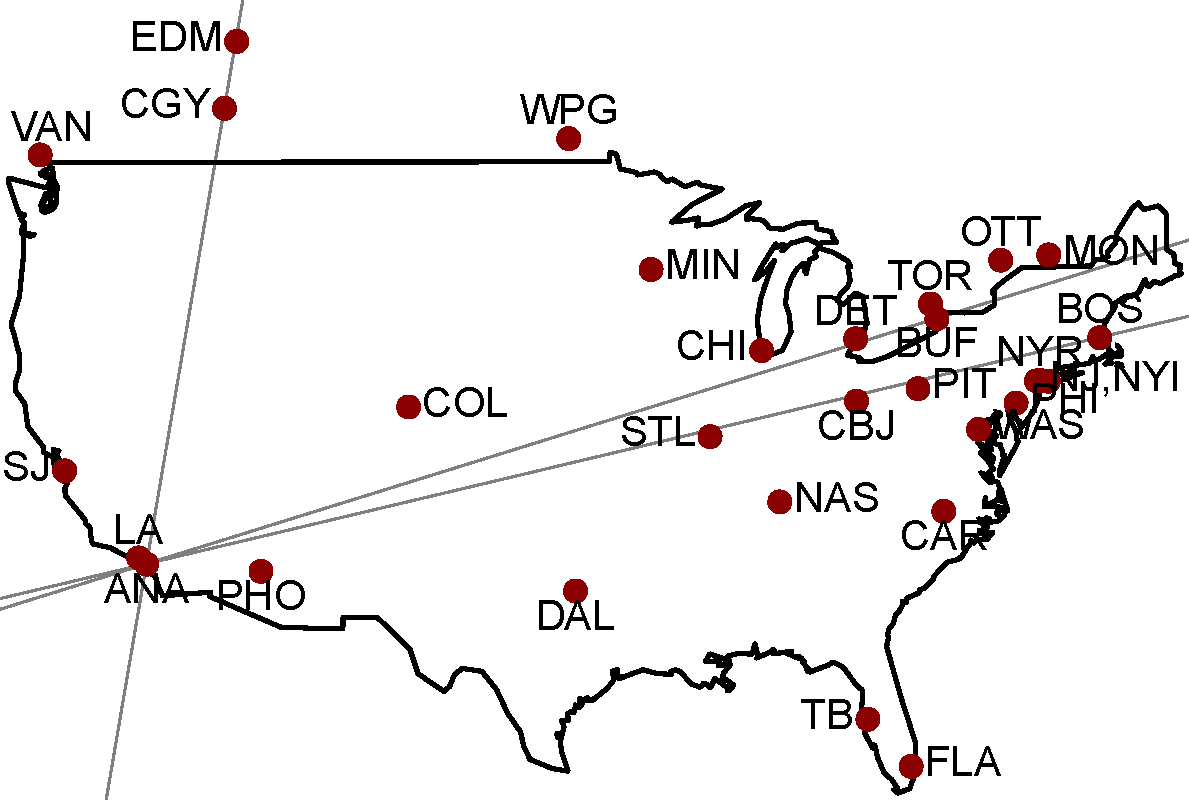
Then we check if the lines split the league into equal halves. If a line does not split the league in half (for example, the line between LA and VAN does not), we remove it from consideration:
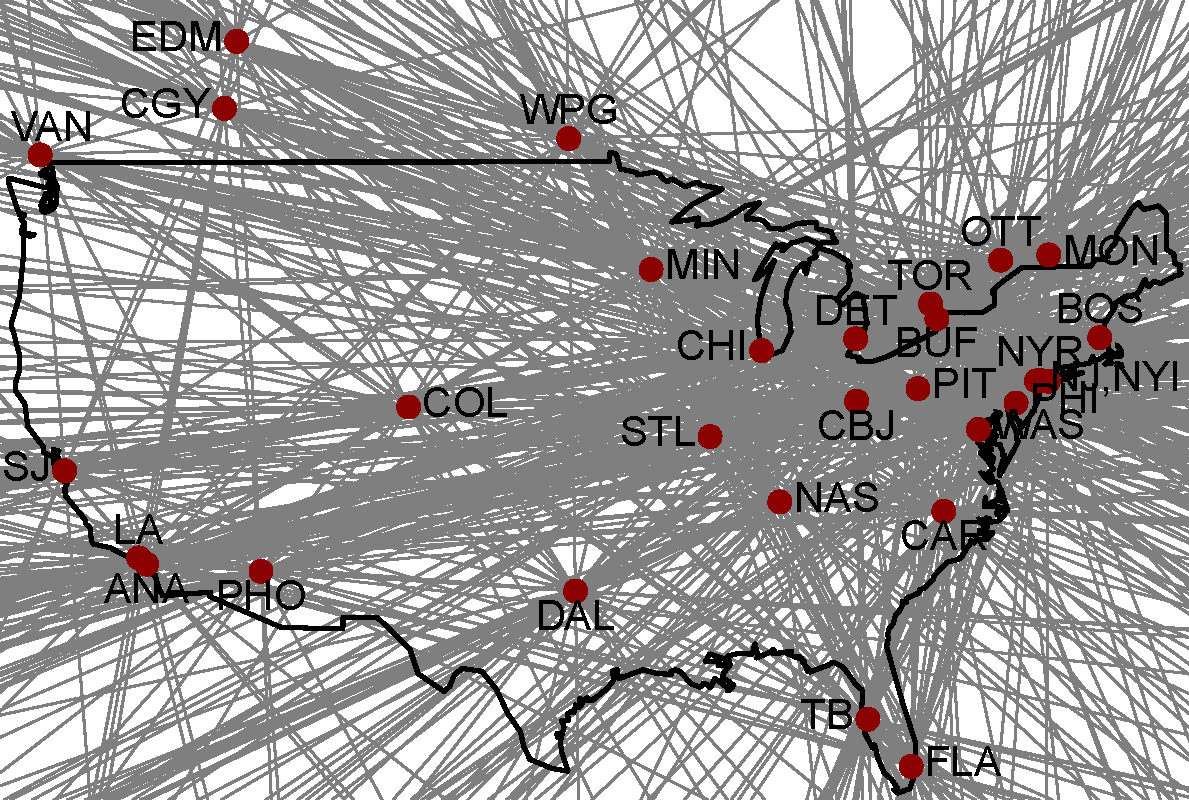
Finally, for conferences, we remove lines that are too horizontal. Using horizontal cuts would result in conferences that span all four time zones and poor travel requirements. We will not remove horizontal lines when we do divisions.
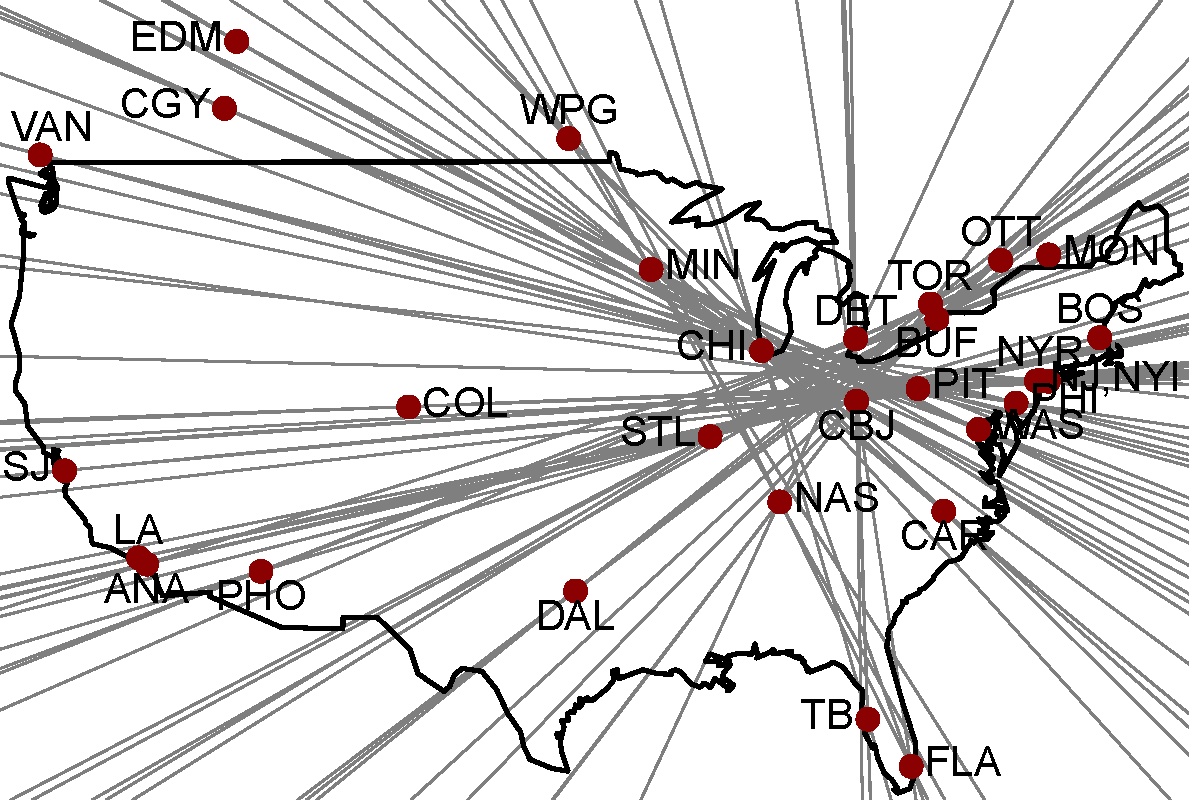
For each of these remaining lines, we form two conferences:
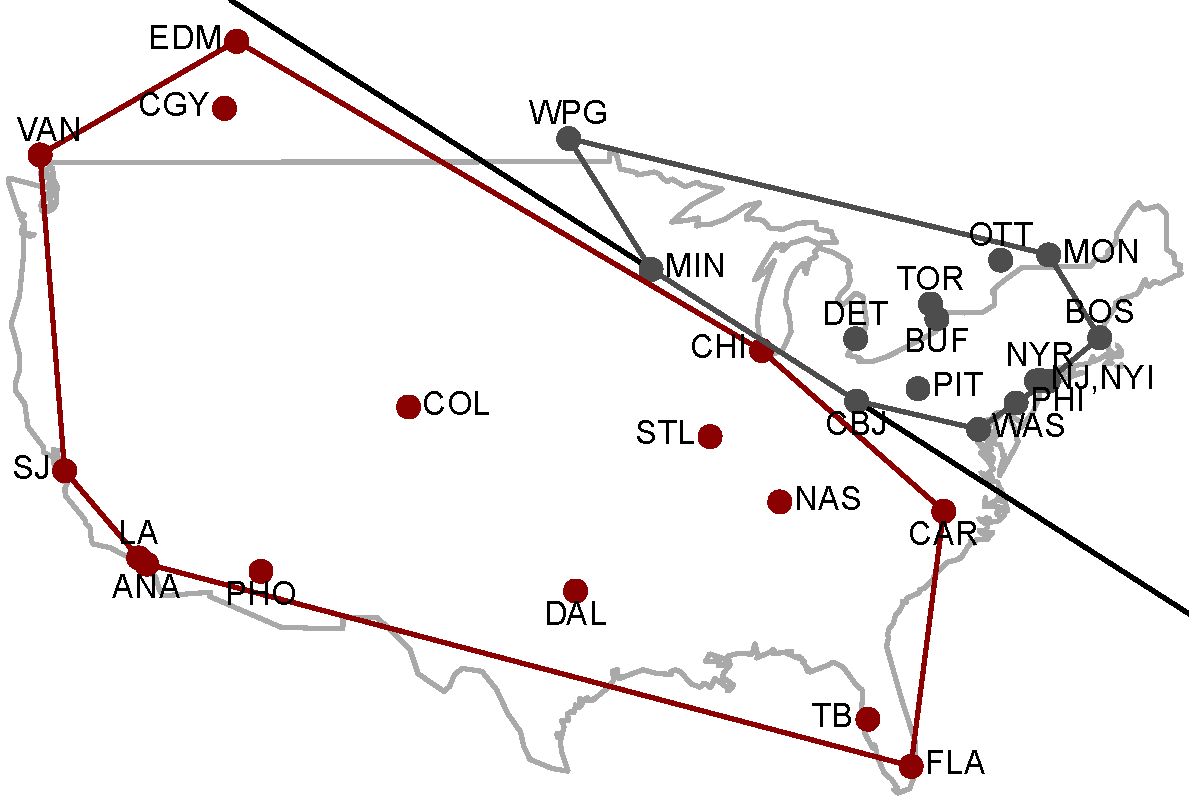
Note that some lines give two possible ways to divide the league in half. Also, in some cases, two different lines can yield the way to divide the league.
For each conference of 15 teams that we found above, we repeat a similar process and find all ways to divide the conference into two groups, one 5-team group and one 10-team group. The only difference in this process is that we do not remove the horizontal lines.
With each 10-team group, we repeat the process one final time and find all ways to split each 10-team group into two 5-team groups.
Results
NHL realignment
Here are the top 100 configurations for the NHL, with no constraints added.
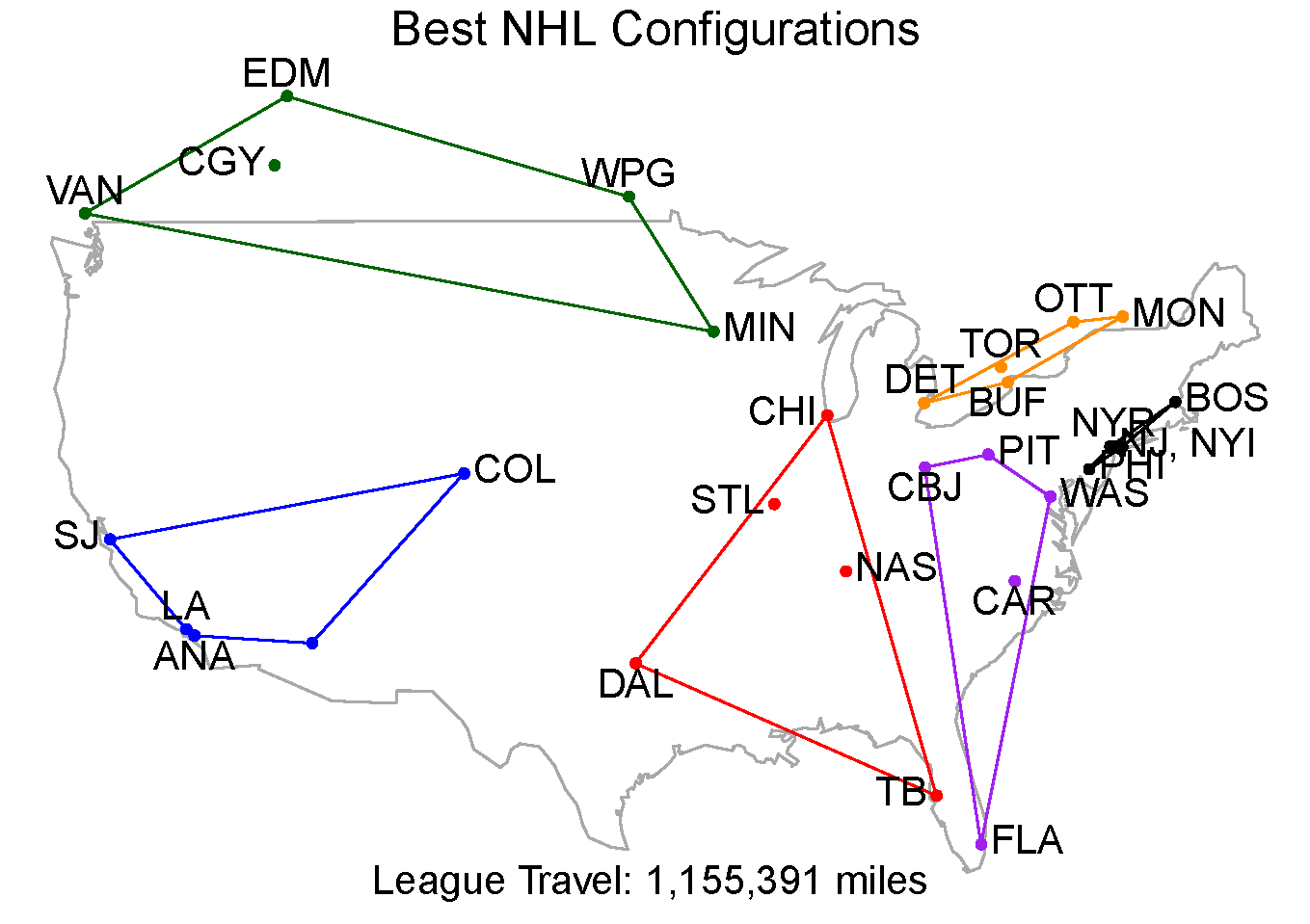
Here’s a slideshow, in case you want to scroll thru more slowly.
Notice that TB and FLA are not in the same division for some of those solutions. Below we give the top 100 configurations with the following constraints:
- The following teams must be in the same division: Tampa Bay and Florida; Philadelphia and Pittsburgh; NY Rangers, NY Islanders, and NJ Devils; Calgary and Edmonton; Anaheim and Los Angeles.
- At most 3 Canadian teams can be in one division
- A division can span at most two different time zones.
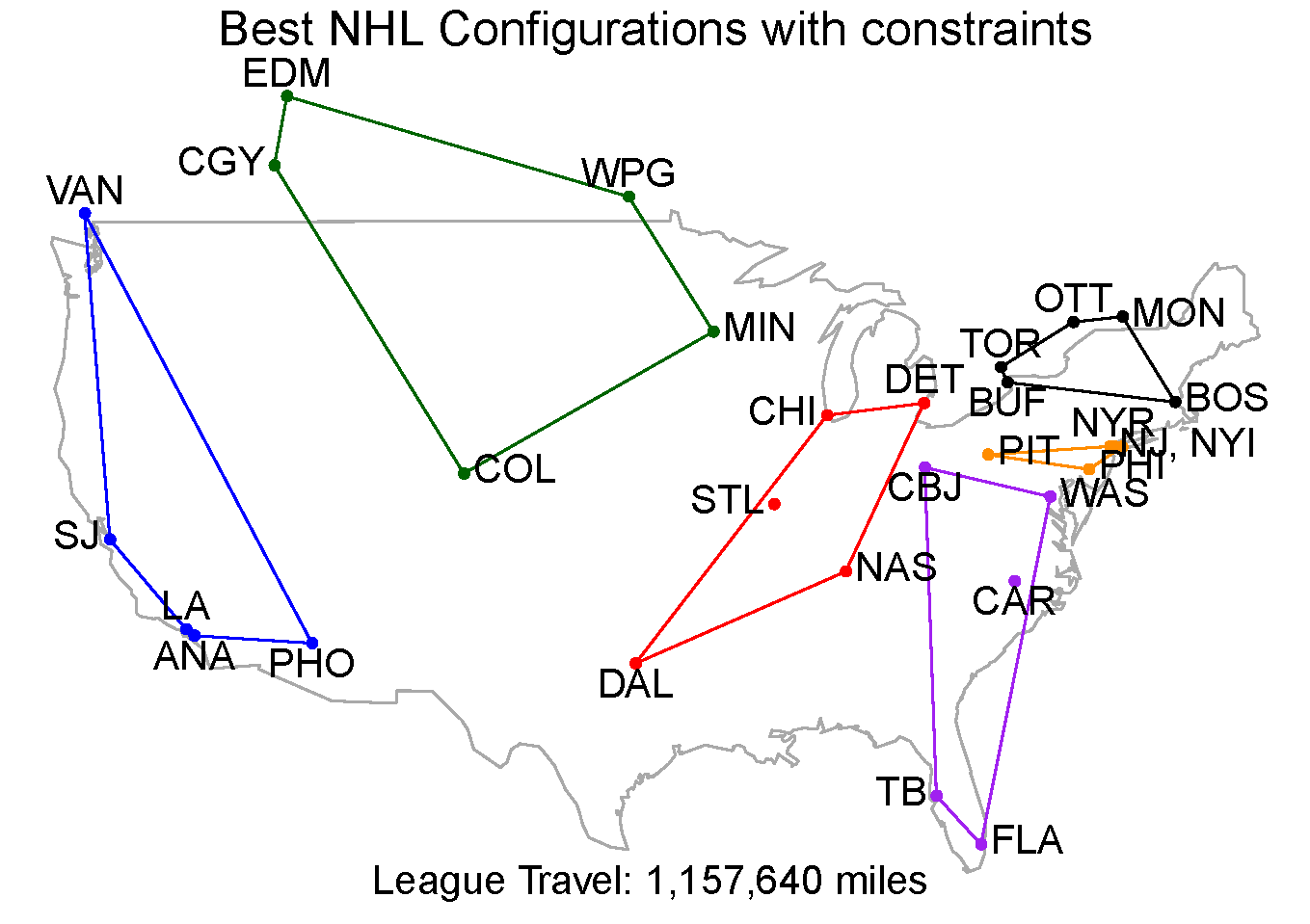
Here’s a slideshow, in case you want to scroll thru more slowly.
MLB Realignment
Here are the top 100 configurations for MLB:
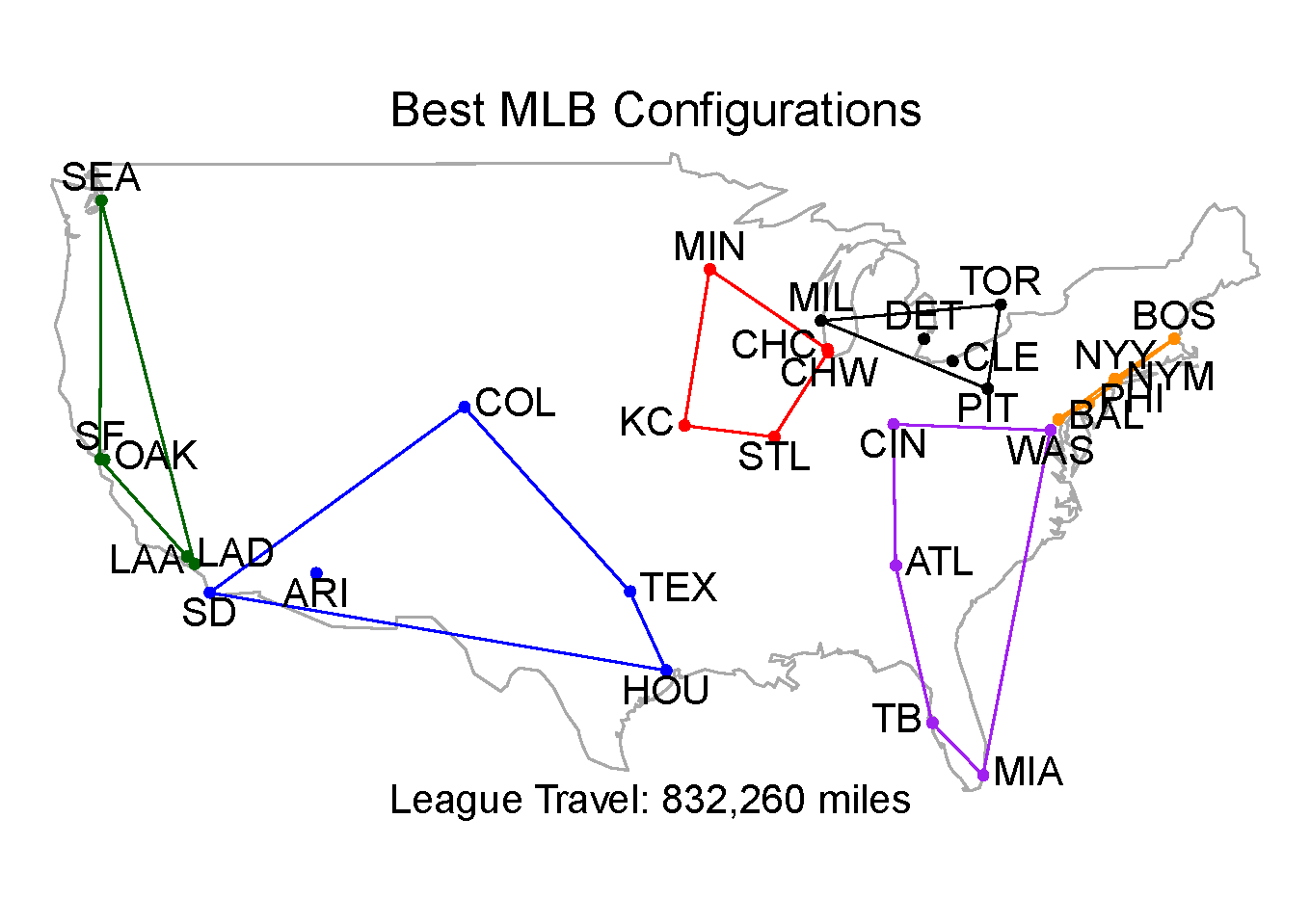
Here’s a slideshow, in case you want to scroll thru more slowly. Here are the top 10 if we don’t allow teams to switch from the AL to the NL, and vice versa.
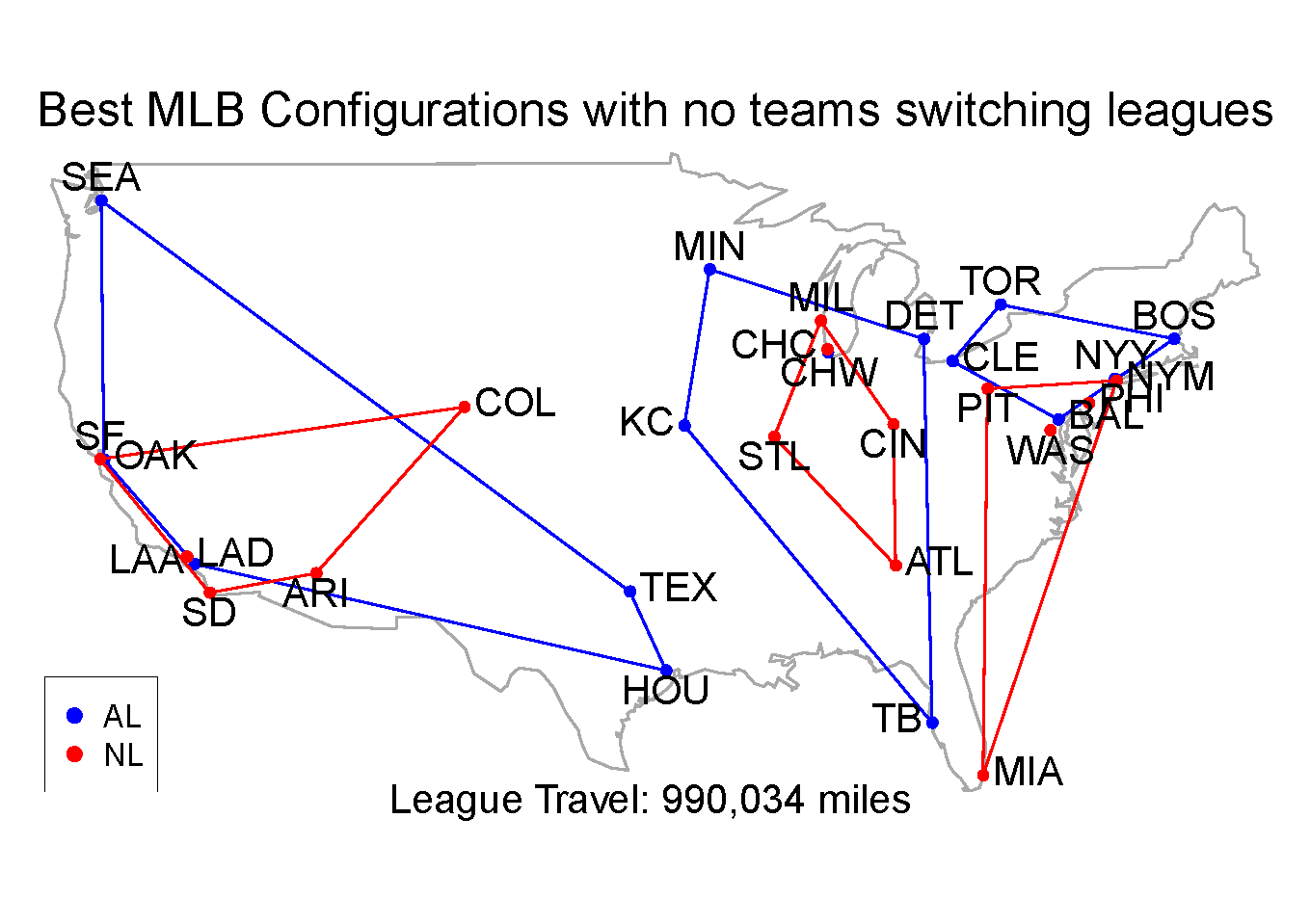
Here’s a slideshow, in case you want to scroll thru more slowly.
NFL Realignment
Here are the top 100 configurations for the NFL:
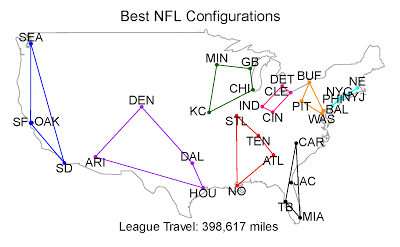
Here’s a slideshow, in case you want to scroll thru more slowly.
NBA Realignment
Here are the top 100 solutions for the NBA:
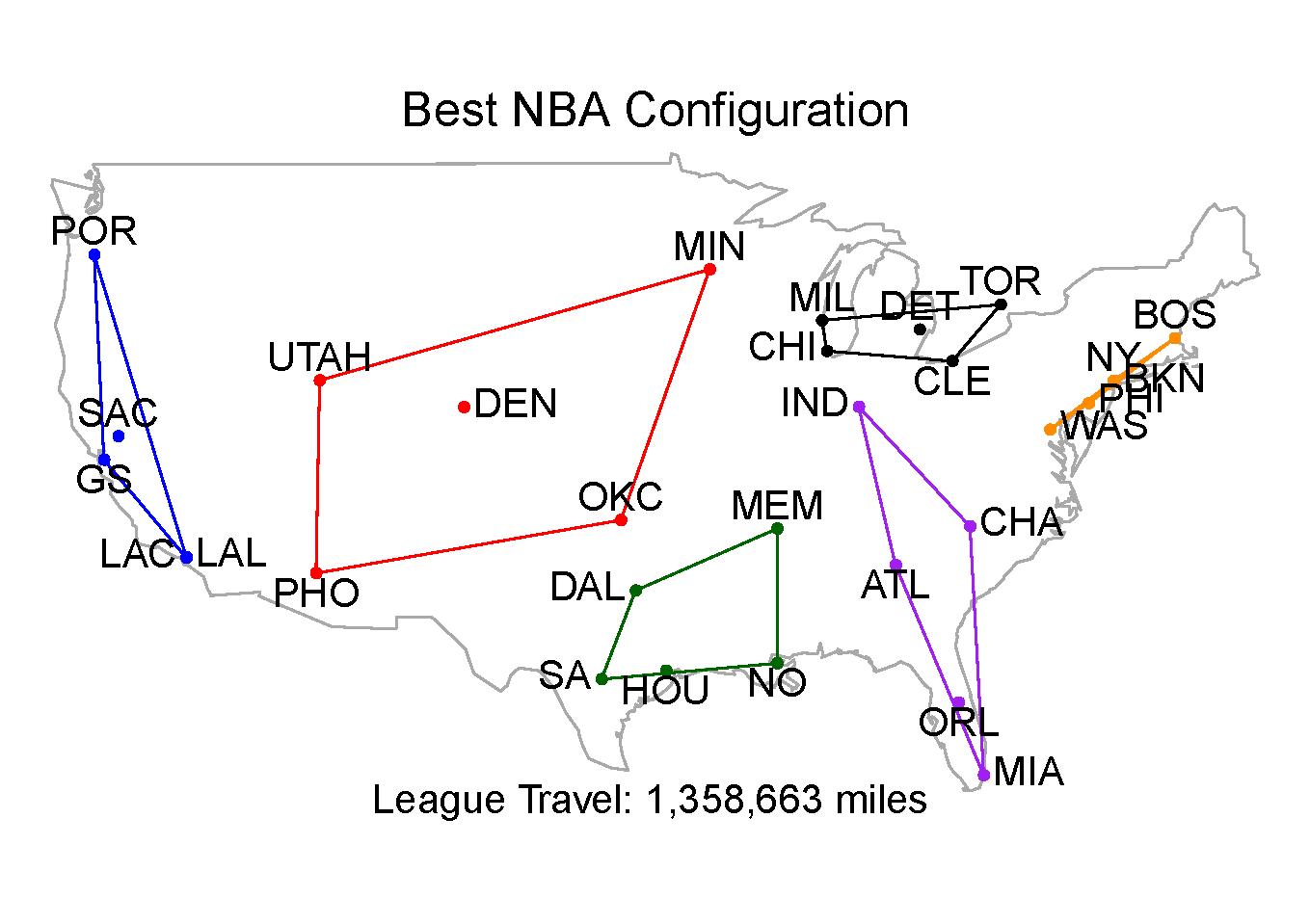
Here’s a slideshow, in case you want to scroll thru more slowly.
